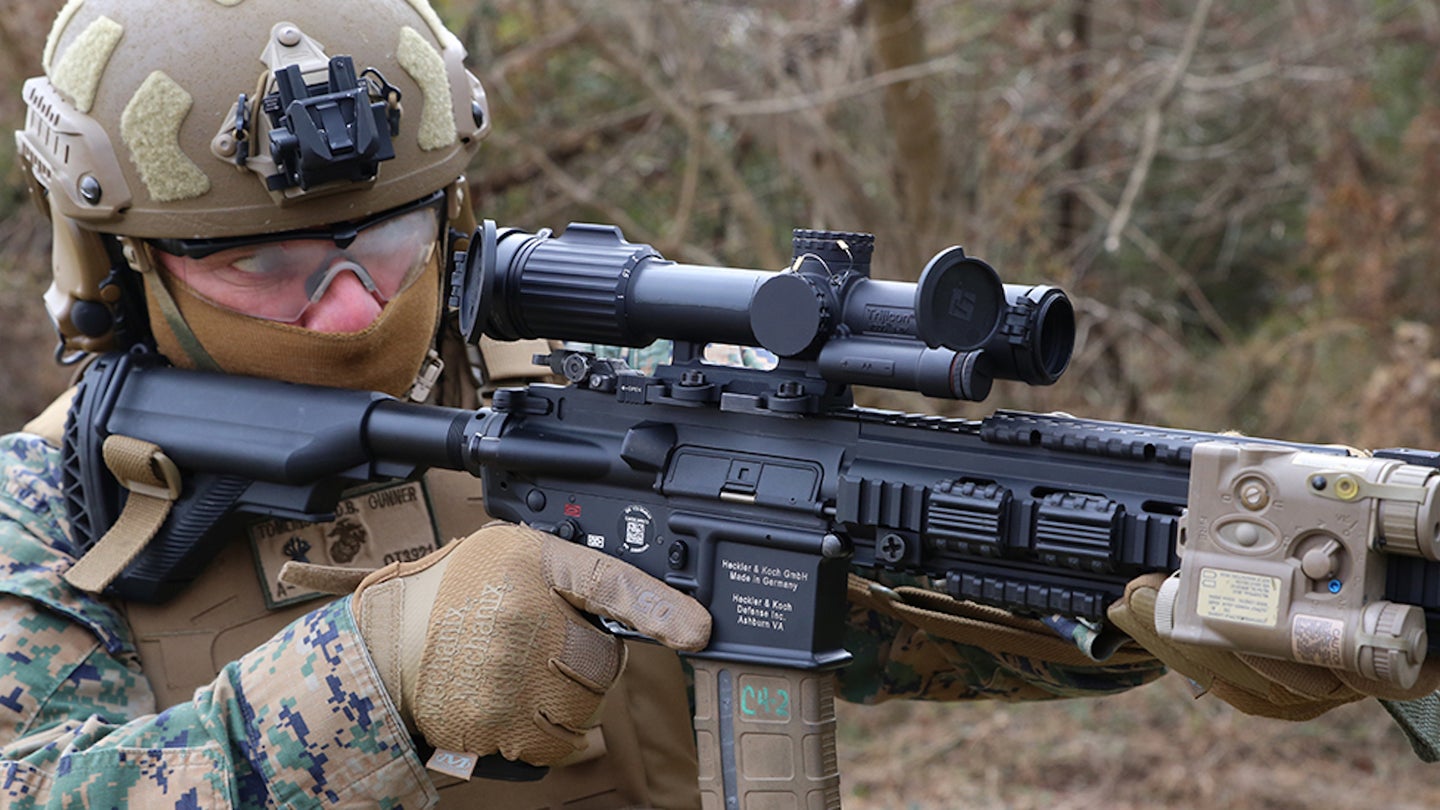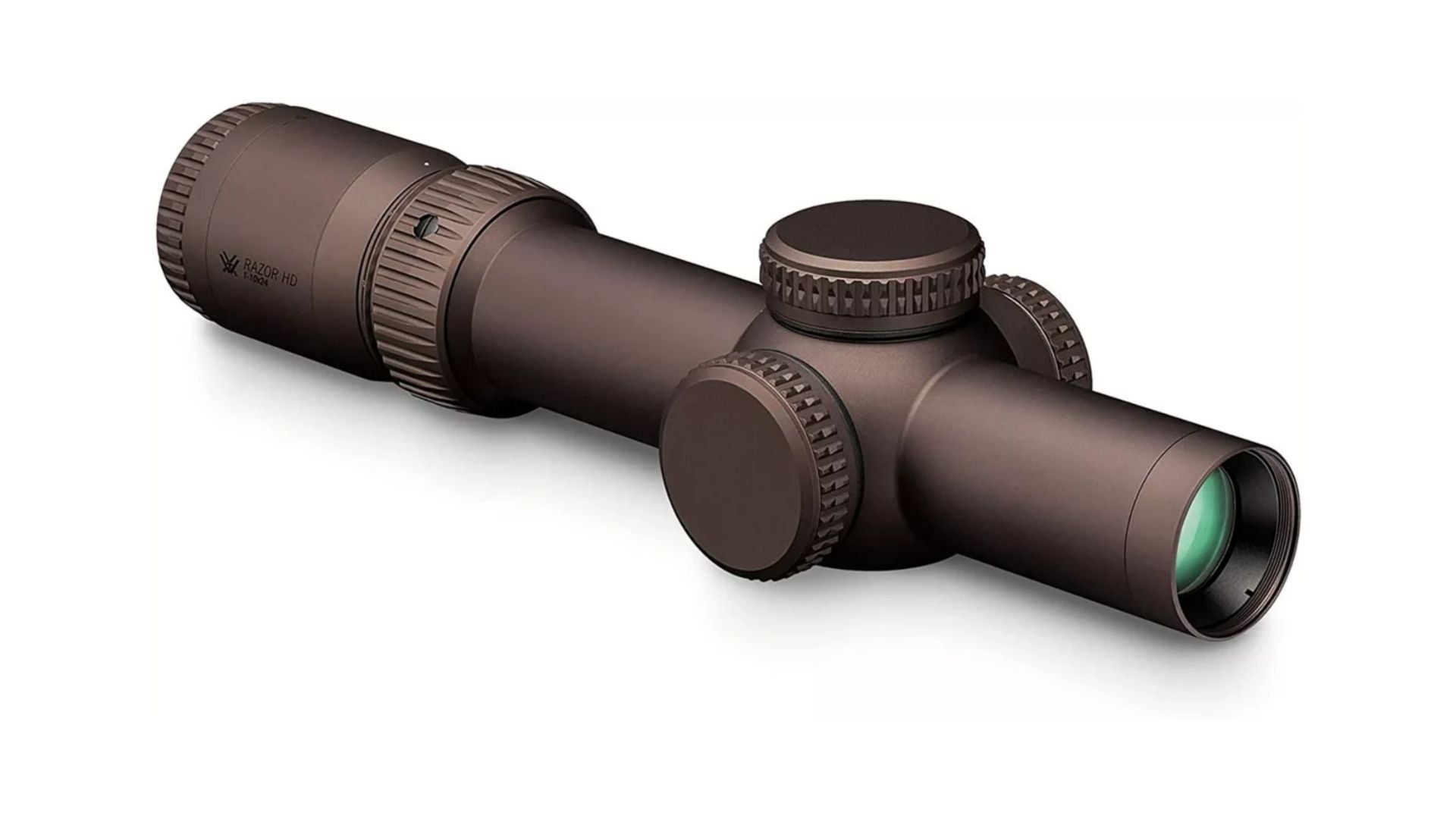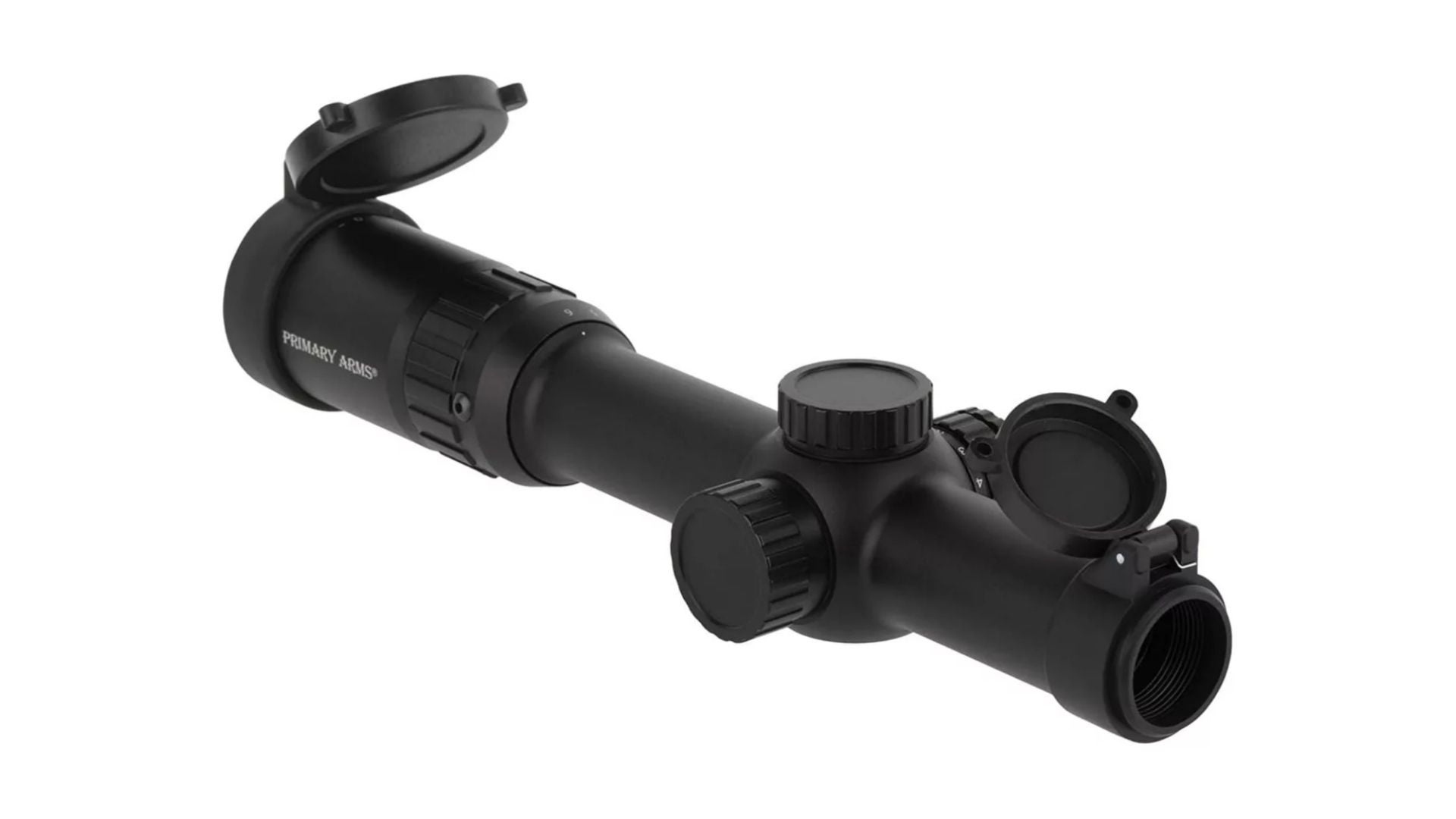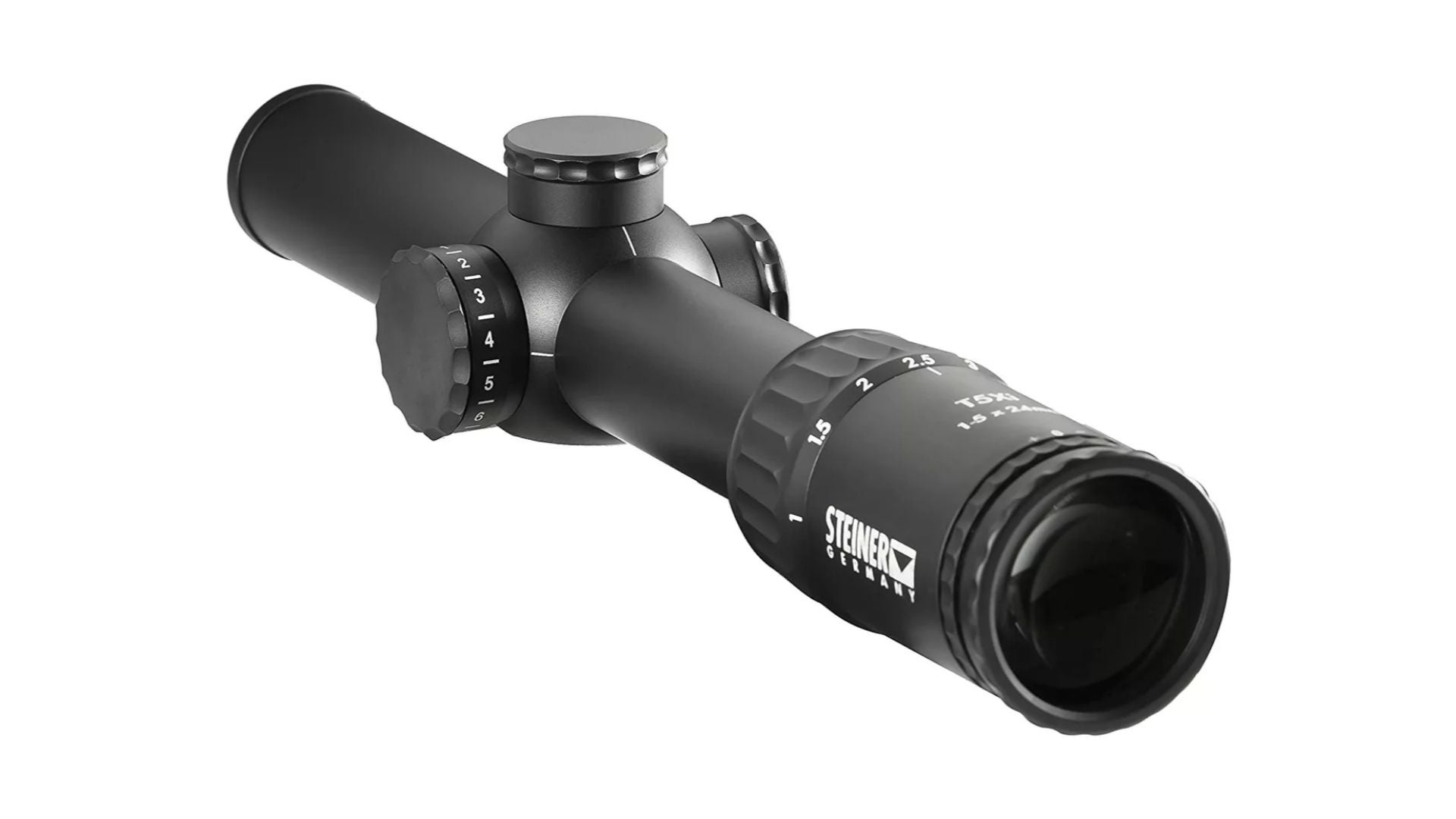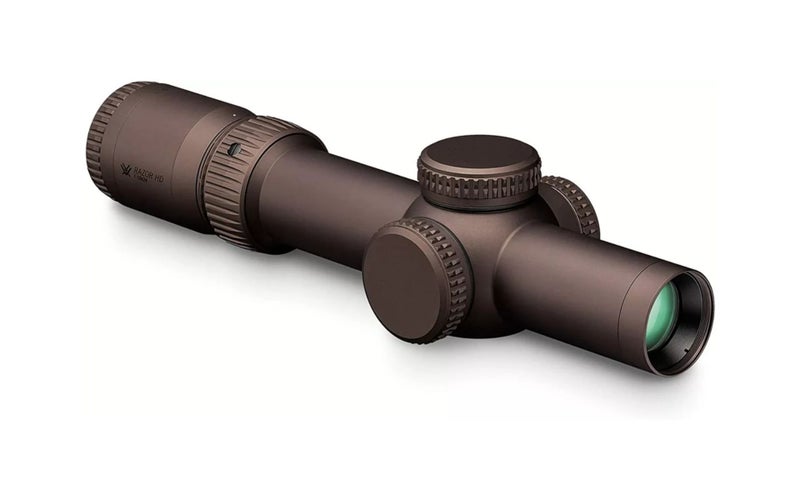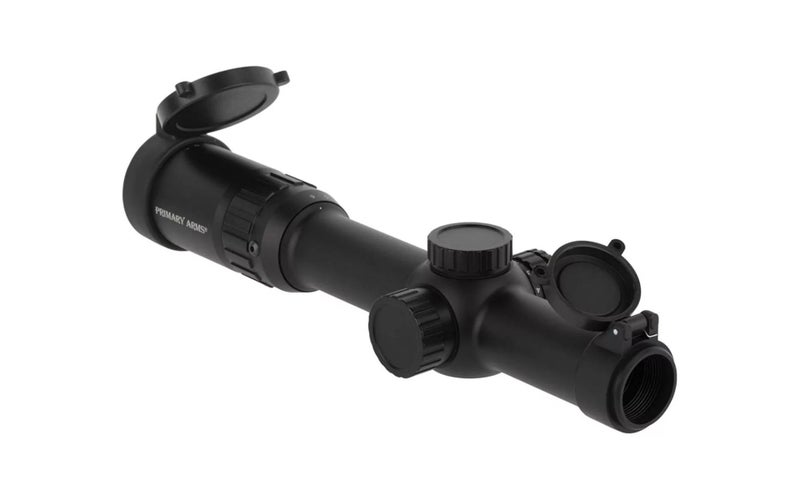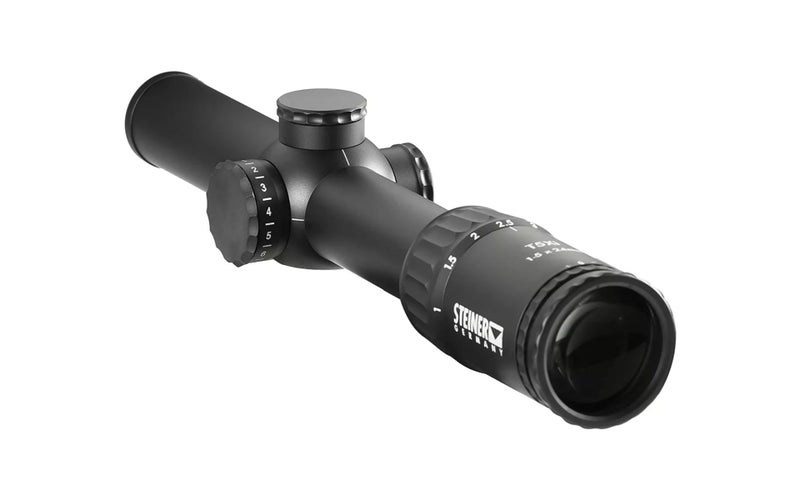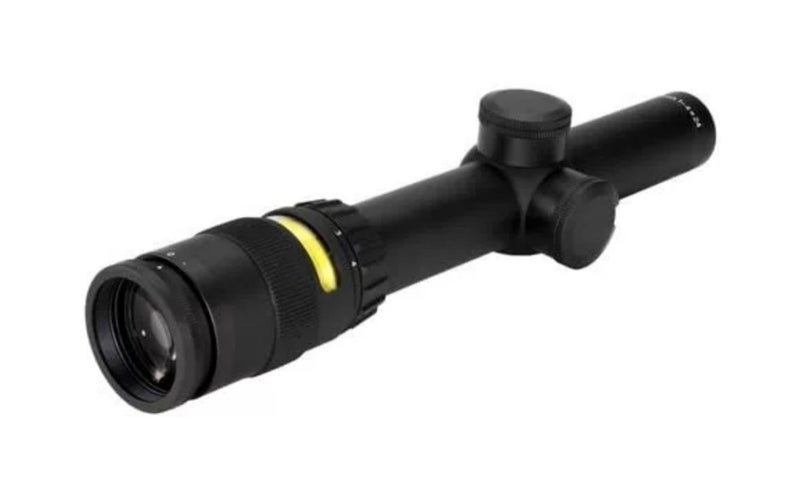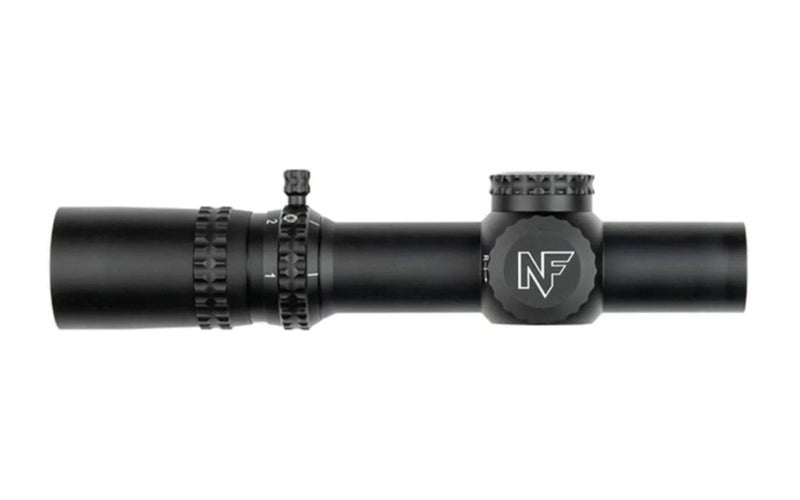We may earn revenue from the products available on this page and participate in affiliate programs.
What’s the deal with LPVOs? Why have they become the dominant optic in professional shooting circles, with firearm instructors, police, and elite military forces? I can tell you in one word: versatility.
LPVO stands for Low Powered Variable Optic, and they are a type of magnified optic that often starts at 1X and goes anywhere from 4X to 6X to 10X. At 1X, they can be almost as good as red dots sight; not quite as fast or as eye box-free, but pretty dang close. As the range increases or the target shrinks, you can zoom in and increase your ability and potential to hit the target. These optics work well at dang near any range your average intermediate cartridge rifle can reach.
LPVOs currently rule as the dominant optic choice currently on the market. As such, we are bringing you the skinny on the best LPVOs based on various categories. Read on and find out which LPVO is right for you.
- Best Overall: Vortex Optics Razor HD Gen 3 1-10X
- Best Value: Primary Arms SLX 1-6x24mm FFP
- Editor’s Choice: Steiner T5Xi 1-5X
- Best 1-4X: Trijicon Accupoint
- SOCOM’s Choice: Nightforce ATACR 1-8×24
The Vortex Optics Razor HD Gen 3 cracked the code on creating a competent, well-made 1-10X LPVO. Vortex built the Gen 3 Razor on the success of the Razor 1-6X currently in use by the U.S. Special Operations Command and somehow figured out how to squeeze a 1-10X level of magnification into the same size as the 1-6X.
The Razor HD Gen 3 packs 1-10X power with an FFP design and your choice of super useful reticles. Add in the fact that it’s only 10.1 inches long and weighs only 21.5 ounces, and you get a lot of optic in a not-so-massive package. Vortex ensures the Razor Gen 3 HD is a tough one too: It’s shock and waterproof and can be completely submerged to IPX7 standards. It’s a rigid one-piece tube, and the lenses get the Armor tek treatment to avoid scratches and abrasions.
Beyond build, the Razor HD Gen 3 is a masterpiece of efficiency. The glass is ultra-clear and easy to see through. From side to side, the lens is distortion-free at every magnification level. It’s an impressive piece of glass that does an amazing job in the clarity department. Shooters can choose between four different reticles, and each and every one of them makes use of the 10X magnification.
The scope offers a ton of magnification in a very small package, which you can make the most of due to the FFP design. The combination of various elevation and windage ladders makes it easy to hit your target — as long as you know your dope, that is. The Razor HD Gen 3 1-10X is at home on AR-15s, AR-10s, and even bolt gun brush hunters will enjoy it.
- Magnification: 1-10X
- Weight: 21.5 ounces
- Length: 10.1 Inches
Amazing magnification-to-size efficiency
Crystal clear glass
Awesome reticles
Expensive
Not the best low light performance
When it comes to budget-friendly optics, you have to find a mix between quality and cost savings. That often means a little compromise, a little give-and-take. Primary Arms has long been the name in high-quality, budget-friendly optics of all types.
The Primary Arms SLX 1-6X FFP offers you a high-quality, well-made piece of glass with a 1-6X magnification setting and a front focal plane setup. Sure, it’s not the most magnification, but it’s the most you’ll get with a budget-grade optic that’s also an FFP design.
The glass is surprisingly clear, and the eye relief is generous at four inches on the low side. It might not be a go-to-war-and-back optic, but for most common tasks, it has what it takes to keep on keeping on. The ACSS reticles also rock and provide a versatile reticle for both mid- to long-range shooting as well as close-quarters engagements. The big ¾ circle works as a red dot at close range, and the chevron and ladder work better for precision work.
The SLX is long in the name but short in the price. At around $400, this is as cheap as an LPVO gets while retaining the high optical quality and first focal plane capability. Finding the right optic on a budget can be tough to do, but the SLX seems to get it done. Sure, it’s not super fancy, but it does provide a degree of brilliance in the basics. It’s a rock-solid optic that will get it done without breaking the bank.
- Magnification: 1-6X
- Weight: 17.6 ounces
- Length: 10.6 inches
Affordable
FFP design
ACSS reticles
Tight eye box
Brightness settings barely make it daylight capable
The Steiner T5Xi 1-5X is simply a personal favorite that fits my needs for an outstanding and well-made optic. Most LPVOs stick to an even magnification range, but Steiner breaks the molds with the maximum of 5X. I’ve long found 5X to be perfectly capable of 500-yard hits, and I’m likely never even to shoot that far. Lots of LPVOs offer more magnification, but my environment doesn’t call for it. I prefer a shorter, lightweight optic with brilliant glass and a magnification range that makes sense for me.
The T5Xi is a very well-made optic backed by German precision, offering a simple setup, clear glass, and a tough-as-hell design. In terms of size, it’s fairly long for a 1-5X setting and also fairly heavy. I imagine some of that weight comes from the optic being built like a tank. It’s submersible up to 33 feet, shockproof, and will hold zero at a temperature range between minus 13 and 145 degrees Fahrenheit. That’s a lot of oomph for a magnified optic.
TheT5Xi’s eye relief ranges between 3.5 and 4.3 with a generous eye box. The reticle is also unobstructed and straightforward, although you’re stuck with 5.56 and 7.62 NATO BDC-type designs. The true 1X design encourages two-eye open shooting for close range, and the brightly illuminated reticle gives you red dot-like performance. For carbines, it’s tough to beat, especially for a rifle used for everything from home defense to hunting. Out of all the LPVOs I’ve used, this one is the closest I’ve experienced to a true red dot at close range.
- Magnification: 1-5X
- Weight: 19.4 ounces
- Length: 11.3 inches
Brilliant glass
Durable and tough
Simple unobstructed reticle
Expensive
A little long and a little heavy
A lot of people write off 1-4X LPVOs in the face of 1-6X, or even 1-10X options. Well, the good ole’ 1-4X is a darn fine option for most carbines, and the Trijicon Accupoint is one of the best 1-4X optics on the market with a triangle reticle that’s both very easy to use and surprisingly handy at both CQB and extended ranges.
The Trijicon Accupoint is a rock-solid optic that is relatively lightweight and very compact. At only 14.4 ounces and only 10.3 inches long, it doesn’t require a whole lot of rail estate. When you are equipping a lightweight carbine, an SBR, or something in range challenged caliber like 7.62×39, 1-4X is more than enough.
Trijicon makes rough and tough optics, and the Accupoint is no different. It’s so waterproof that you can sink it down to 10 feet and not worry. It’s shockproof, and get this, it’s powered by the sun! Seriously, Trijicon pioneered the use of tritium and its present and adjustable here to regulate reticle brightness.
The triangular reticle is large and in charge and allows you to snap on target in nothing more than a breath. The Accupoint might only pack four power magnification at the high side, but that’s more than enough for a lot of shooters. Sure, the optic doesn’t offer you a fancy reticle, but at 1-4x ranges, how much ballistic drop are you counting on? A 3.2-inch eye relief combined with a very forgiving eye box and massive triangle reticle, and you get a fast, simple-to-use optic.
We often focus on modern semi-auto rifles for LPVOs, but the Accupoint would work on anything from an AR to a lever gun. It’s super small, very capable, and the best 1-4X I know of.
- Magnification: 1-4X
- Weight: 14.4 ounces
- Length: 10.3 inches
Light and short
Awesome eyebox
Very clear glass
Great CQB to mid-range range reticle
Pricey for a 1-4X
Not great past 300 yards
When the U.S. Special Operations Command picks an optic, it’s worth paying attention. These are America’s premier warfighters, after all, and they often splurge to get their equipment — and the Nightforce ATACR is certainly a splurge. This first focal plane optic, awesome reticle, and crystal clear optical clarity does nothing but impress. It’s tough to use a Nightforce and then go back to anything else.
For starters, Nightforce is an ‘if you know, you know’ company that produces the highest quality optics. This 1-8X LPVO was groundbreaking in 2018 and quickly became the optic to beat. Four years later, it’s still a top dog with a proven track record
“Overbuilt” is putting it mildly when describing the ATACR. Variable optics always have a degree of vulnerability to them, more so than red dots or prisms, and Nightforce did their best to minimize that issue as much as possible. These are water-, shock-, and even Marine grunt-proof optics.
From edge to edge, the clarity is outstanding without distortion throughout the entire magnification range. The FC-DMX reticle allows you to have a small but bright red dot at the lower magnifications and, as the magnification increases, you get a windage and elevation ladder for making accurate shots in almost any condition. The massive eye box helps reduce scope shadow and issues with getting a rapid CQB-style sight picture, which may make this the perfect combat-oriented LPVO.
The sum of all its parts equals one helluva well-made optic. And hey, if it’s good enough for SOCOM, it’s good enough for us — right?
- Magnification: 1-8X
- Weight: 21 ounces
- Length: 10.1 inches
As tough as they come
Daylight bright illumination
Clear glass
Expensive
Not as size efficient as the Vortex Optics Razor 1-10X
Why you should trust us
Finding the right optic can be tricky, and I’ve spent a ton of money and a lot of time finding optics that work. I’ve also paid a lot of attention to the development of optics as well as how LPVOs work in a tactical and practical sense. These suggestions are mine, but they do represent industry standards for excellence.
Types of LPVOs
First focal plane
First or front focal plane scopes place the reticle in front of the scope’s erector. This creates the effect of the reticle growing and shrinking as magnification increases or decreases. Nothing actually grows or shrinks, and the magnification just makes it appear to occur.
Modern LPVO reticles often feature markings for bullet drop and windage and tools like rangefinders. These markings are measurements typically in MOA or MILs. The benefit to an FFP scope is that these measurements remain the same regardless of the magnification range, allowing them to remain accurate at any magnification.
With LPVOs in particular, the illuminated portions and reticles shrink at lower settings. This gives the illuminated portion a red dot-like small size, and since the main reticle shrinks, it’s not obstructing your vision for close-quarter shooting.
Second focal plane
Second focal plane scopes place the reticle behind the scope’s erector. This has the effect of the reticle remaining the same size throughout the magnification range. Since the magnification changes but the reticle does not, the measurements in MOA or MIL are often only accurate at one magnification level. This is often, but not always, the highest level of magnification.
In the world of LPVOs, this can limit your capabilities with high-powered magnified optics. If it’s a 1-8X or 1-10X, you want an FFP reticle, and depending on the reticle design for a 1-6X, you might want FFP as well. If you use a 1-4X or even 1.5-5X, then an SFP will likely be perfectly capable.
LPVOs with lower power and simple reticles can benefit from benign SFP optics. For example, the Trijicon Accupoint’s triangle reticle benefits from remaining the same size as magnification increases due to its large size.
Key features of LPVOs
LPVO scopes are unlike other optics in various ways, which means the key features that make an LPVO great might not be handy on a traditional variable optic or a high-powered, long-range optic. As such, it’s important to recognize a few key features of LPVOs.
Eye box
The eye box is the area behind the optic where you can see a full-sight picture through your scope. The more generous the eye box, the quicker you get behind your optic and on target. LPVOs with a generous eye box allow you to get behind the optic at a low magnification setting with minimal to no scope shadow and easily make close-quarters shots.
The closest measurement we have for the eye box is exit pupil. The larger the exit pupil, the more space you should have. However, exit pupil doesn’t tell the full story. You’ll find optics with the same exit pupil, but one clearly has a better eye box.
Reticle design
LPVOs challenge optics companies to produce reticles that work at both close and moderate to long ranges. This often results in an interesting mix of options.
The higher the magnification the optic provides, the more likely you’ll need a more complicated and intuitive reticle to account for bullet drop and windage. You’ll also need to know your round’s ballistics to make use of these reticle systems. The most complicated often appears to be a triangular design showing windage and drop measured in either MILs or MOA.
Since LPVOs are trusted for long- and short-range shooting, you’ll want an illuminated reticle — preferably a reticle that is daylight bright and eye-catching. More budget-oriented LPVOs often fail to provide true daylight bright illumination, and if it’s for a combative role, it’s a feature worth investing in.
A third reticle type is a BDC, or bullet drop compensating, reticle. These reticles are set to compensate for drop at particular ranges automatically. They can be convenient but are a bit picky. These are tuned to a specific loading of a particular caliber in a particular barrel length. Anything that differs may result in variation from the BDC.
Good glass
Anytime we talk about optics, we need to discuss glass. Glass makes a huge difference in overall clarity, which factors in color presentation and distortion. ED (extra-low dispersion) glass is one of the key features to look for in good glass. ED glass presents a sharper image and accurate color rendering.
Lens coatings also help increase light transmission, reduce internal glare, and can even help protect the glass from abrasions. You’ll want fully multi-coated lenses to get the clearest picture.
Where the glass comes from can also make a difference. Glass from Germany and Japan is often considered the best. Companies like Nightforce use Japanese glass, and famed companies like Zeiss use German glass. With more budget-friendly options, you’ll have to expect Chinese glass.
Benefits of LPVOs
LPVOs provide several benefits to shooters, and they’ve become the dominant optical choice for a reason. There aren’t many optics that can provide both near and far capability, with an impressive amount of magnification, in the size of an LPVO.
Versatility
LPVO scopes offer shooters unmatched versatility. They quickly adapt to any situation and allow the user to swap between close-quarters fighting to advanced long-range shots. They give you the best of both worlds with a little compromise in between, but still a very versatile package.
Efficiency
LPVOs deliver a lot of optic with less size, weight, and complexity than any red dot and magnifier combo. You get more magnification and a better reticle in a much more efficient package.
Reticle choice
Not only does the world of LPVOs offer a wide variety of reticles to choose from, but your reticle can also be completely different depending on your focal plane and magnification. With an FFP scope, your reticle could be a big red dot at 1X and then a massive pyramid of drop and windage points at 8X.
Pricing consideration for LPVOs
LPVOs quickly became a dominant market item in the gun world. As such, they are now available at basically all price points. Let’s cover a few of the price points that appeal to most shooters. I do not include the ‘cheap’ optics, which I would consider no-gos on anything besides a .22 LR.
Budget
Budget doesn’t necessarily mean cheap. The more affordable LPVO I’d use costs around $250 dollars, and I’d cut the budget grade off at about $500. On the low end of this price point, you can get a solid 1-4X SFP optic and at the higher end 1-6X FFP scopes.
Budget LPVOs make decent hunting or competitive optics but not a great option for duty or defensive use. They are unlikely to take tons of abuse, and you aren’t likely to get a true daylight bright reticle.
Mid-range
Mid-range LPVOs cost between $500 and $1,2000 and are where we get into solid, FFP optics with daylight bright illumination. Don’t expect rock-solid 1-10X optics at this price point, but you can get some very, very nice duty-ready 1-6X optics. This is the beginning range for duty and defensive optics. They might be slightly dated in design but will still be competent optics.
Premium
Premium optics above $1,500 are where we see the clearest glass, the most modern features, combined with daylight bright and awesome reticles. Premium optics will be extremely tough and easily capable of withstanding duty use. This is the Marine-proof class of optics.
How we chose our top picks
There are so many great LPVOs that this list wasn’t easy to make. I tried to provide a ton of variety at various price points. I could have easily made this a list of $2,000-and-up LPVOs, but that wouldn’t appeal to a wide variety of shooters. I also used personal experience to guide my choices and the experience of friends and experts in the firearm world. First-hand experience guided most of these choices, and the opinions of trusted friends reinforced it. Additionally, I looked at the optics used by professionals in the field, including the U.S. Special Operations Command, hunters, police officers, and firearm instructors.
FAQs about LPVOs
You’ve got questions, Task & Purpose has answers.
Q: What is an LPV scope?
A: LPV is just another catch-all term for LPVOs. They just dropped the optics and replaced it with scope.
Q: What LPVOs does the U.S. military use?
A: SOCOM uses the Nightforce ATACR 1-8X, the Army uses the SIG Sauer TANGO6, and the Marine Corps uses the Trijicon VCOG.
Q: What magnification is considered LPVO?
A: Typically, 1.0X to 1.5X is where LPVOs begin, and they can go anywhere from there with 10X and even 12X models existing.
Q: What’s the difference between LPVO and ACOG?
A: An ACOG is a fixed-power prism sight. LPVOs are variable sights.
Q: Which is better, an FFP scope or an SFP scope?
A: It’s entirely dependent on the task at hand. The 1-4X optics are typically good in the SFP plane, and anything above often works better as an FFP.
Our gear section
Travis Pike is a former Marine machine gunner who served with 2nd Battalion, 2nd Marines for five years. He deployed in 2009 to Afghanistan and again in 2011 with the 22nd MEU(SOC) during a record-setting 11 months at sea. He’s trained with the Romanian Army, the Spanish Marines, the Emirate Marines, and the Afghan National Army. He plays in the great outdoors of Northwest Florida and enjoys good beer, sharp knives, and long walks in the woods.
com/news/task-and-purpose-product-reviews/” target=”_blank” rel=”noreferrer noopener”>ocess.
